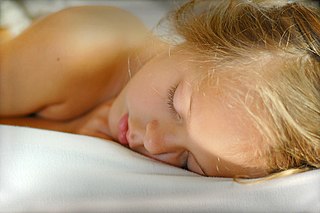 W
WSleep is a naturally recurring state of mind and body, characterized by altered consciousness, relatively inhibited sensory activity, reduced muscle activity and inhibition of nearly all voluntary muscles during rapid eye movement (REM) sleep, and reduced interactions with surroundings. It is distinguished from wakefulness by a decreased ability to react to stimuli, but more reactive than a coma or disorders of consciousness, with sleep displaying very different and active brain patterns.
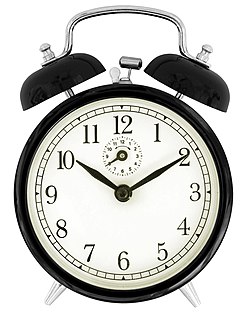 W
WAn alarm clock is a clock that is designed to alert an individual or group of individuals at a specified time. The primary function of these clocks is to awaken people from their night's sleep or short naps; they are sometimes used for other reminders as well. Most use sound; some use light or vibration. Some have sensors to identify when a person is in a light stage of sleep, in order to avoid waking someone who is deeply asleep, which causes tiredness, even if the person has had adequate sleep. To turn off the sound or light, a button or handle on the clock is pressed; most clocks automatically turn off the alarm if left unattended long enough. A classic analog alarm clock has an extra hand or inset dial that is used to specify the time at which the alarm will ring. Alarm clocks are also used in mobile phones, watches, and computers.
 W
WA bed is a piece of furniture which is used as a place to sleep, relax, or engage in sexual activities.
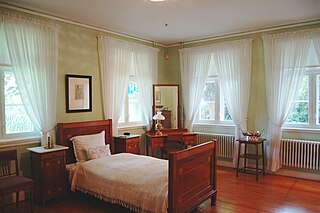 W
WA bedroom is a room of a house, mansion, castle, palace, hotel, dormitory, apartment, condominium, duplex or townhouse where people sleep. A typical western bedroom contains as bedroom furniture one or two beds, a clothes closet, and bedside table and dressing table, both of which usually contain drawers. Except in bungalows, ranch style homes, or one-storey motels, bedrooms are usually on one of the floors of a dwelling that is above ground level.
 W
WA bedtime story is a traditional form of storytelling, where a story is told to a child at bedtime to prepare the child for sleep. The bedtime story has long been considered "a definite institution in many families".
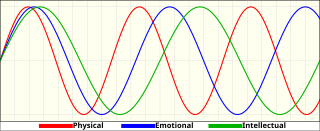 W
WThe biorhythm theory is the pseudoscientific idea that that our daily lives are significantly affected by rhythmic cycles with periods of exactly 23, 28 and 33 days, typically 23-day physical cycle, a 28-day emotional cycle, and a 33-day intellectual cycle. The idea was developed by Wilhelm Fliess in the late 19th century, and was popularized in the United States in late 1970s. The proposal has been independently tested and, consistently, no validity for it has been found.
 W
WA blindfold is a garment, usually of cloth, tied to one's head to cover the eyes to disable the wearer's sight. While a properly fitted blindfold prevents sight even if the eyes are open, a poorly tied or trick blindfold may let the wearer see around or even through the blindfold.
 W
WA circadian rhythm is a natural, internal process that regulates the sleep-wake cycle and repeats on each rotation of the Earth roughly every 24 hours. It can refer to any biological process that displays an endogenous, entrainable oscillation of about 24 hours. These 24-hour rhythms are driven by a circadian clock, and they have been widely observed in plants, animals, fungi, and cyanobacteria.
 W
WCo-sleeping is a practice in which babies and young children sleep close to one or both parents, as opposed to in a separate room. Co-sleeping individuals sleep in sensory proximity to one another, where the individual senses the presence of others. This sensory proximity can either be triggered by touch, smell, taste, or noise. Therefore, the individuals can be a few centimeters away or on the other side of the room and still have an effect on the other. It is standard practice in many parts of the world, and is practiced by a significant minority in countries where cribs are also used.
 W
WCounting sheep is a mental exercise used in some Western cultures as a means of putting oneself to sleep.
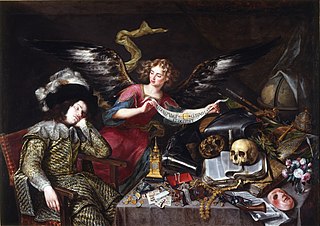 W
WA dream is a succession of images, ideas, emotions, and sensations that usually occur involuntarily in the mind during certain stages of sleep. The content and purpose of dreams are not fully understood, although they have been a topic of scientific, philosophical and religious interest throughout recorded history. Dream interpretation is the attempt at drawing meaning from dreams and searching for an underlying message. The scientific study of dreams is called oneirology.
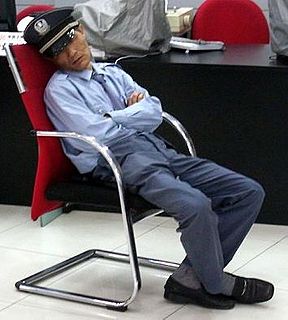 W
WSleeping while on duty or sleeping on the job – falling asleep while one is supposed not to – is considered gross misconduct and grounds for disciplinary action, including termination of employment, in some occupations. Recently however, there has been a movement in support of sleeping, or napping at work, with scientific studies highlighting health and productivity benefits, and over 6% of employers in some countries providing facilities to do so. In some types of work, such as firefighting or live-in caregiving, sleeping at least part of the shift may be an expected part of paid work time. While some employees who sleep while on duty in violation do so intentionally and hope not to get caught, others intend in good faith to stay awake, and accidentally doze.
 W
WScreen time is the amount of time spent using a device with a screen such as a smartphone, computer, television, or video game console. The concept is under significant research with related concepts in digital media use and mental health. Studies show that screen time directly impacts child development, and mental and physical health. The positive or negative health effects of screen time are influenced by levels and content of exposure. To prevent harmful exposure to screen time, some governments have placed regulations on its usage.
 W
WEve Sleep Plc , is a UK-based e-commerce business that sells mattresses online. It was founded in 2014 and launched to the public in December 2014.
 W
Wf.lux is a cross-platform computer program that adjusts a display's color temperature according to location and time of day, offering functional respite for the eyes. The program is designed to reduce eye strain during night-time use, helping to reduce disruption of sleep patterns.
 W
WFemme nue dormant au bord de l'eau is a 1921 oil on canvas painting by the Swiss and French artist Félix Vallotton. It was given to the Strasbourg museum by Vallotton's widow in 1926 and is now in the Musée d'Art moderne et contemporain. Its inventory number is 55.974.0.879.
 W
WGo the Fuck to Sleep is a black comedy book written by American author Adam Mansbach and illustrated by Ricardo Cortés. Described as a "children's book for adults", it reached No. 1 on Amazon.com's bestseller list a month before its release, thanks to an unintended viral marketing campaign during which booksellers forwarded PDF copies of the book by e-mail.
 W
WHästens Sängar AB, doing business as simply Hastens, is a Swedish manufacturer established in 1852, today specializing in beds, bedlinen, pillows and lifestyle accessories.
 W
WHibernation is a state of minimal activity and metabolic depression in endotherms. Hibernation is a seasonal heterothermy characterized by low body-temperature, slow breathing and heart-rate, and low metabolic rate. It most commonly occurs during winter months.
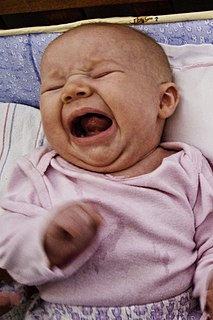 W
WInfant crying is the crying of infants as a response to an internal or external stimulus. Infants cry as a form of basic instinctive communication. Essentially, newborns are transitioning from life in the womb to the external environment. Up to 27% of parents describe problems with infant crying in the first four months. Up to 38% identify a problem with their infant crying within the first year. Parents can be concerned about the amount of time that their infant cries, how the infant can be consoled, and disrupted sleeping patterns. Colic is used as a synonym for excessive crying of infants, even though colic may not be the cause of excessive crying.
 W
WPaul Kern was a Hungarian soldier during World War I. On June 24, 1915, he was shot in the head by a Russian soldier during an attack on the village of Chlebovice in Galicia. The bullet removed part of his frontal lobe. Rather than killing him, this made him unable to sleep.
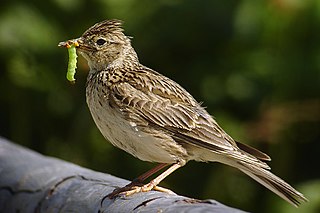 W
WA lark, early bird, morning person or, in Scandinavian countries, an A-person, is a person who usually gets up early in the morning and goes to bed early in the evening. The lark (bird) starts its day very early, which explains the choice of the word lark for people who may sleep from around 10 p.m. to 5 or 6 a.m. or earlier. Human "larks" tend to feel most energetic just after they get up in the morning. They are thus well-suited for working the day shift.
 W
WLong Ambients 1: Calm. Sleep. is the twelfth studio album by American electronica musician Moby. It was released on February 25, 2016, as a free download on his Little Pine restaurant Web site and his own Web site. The album consists of around four hours of recordings Moby produced for his own personal listening, and which he subsequently made available for downloading and streaming, without cost or licensing. In March 2019, Moby released a follow-up ambient album, Long Ambients 2.
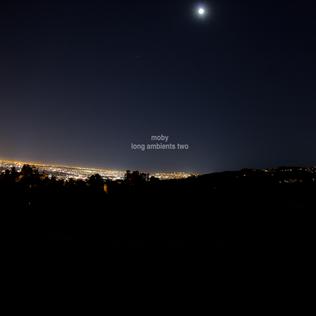 W
WLong Ambients 2 is the sixteenth studio album by American electronic musician, songwriter, and producer Moby, released on March 15, 2019. It is the sequel to his previous ambient album, Long Ambients 1: Calm. Sleep. (2016).
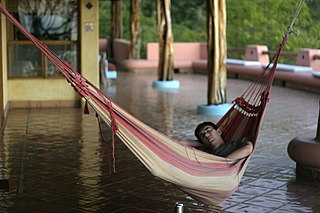 W
WA nap is a short period of sleep, typically taken during daytime hours as an adjunct to the usual nocturnal sleep period. Naps are most often taken as a response to drowsiness during waking hours. A nap is a form of biphasic or polyphasic sleep, where the latter terms also include longer periods of sleep in addition to one single period.
 W
WNap pods also known as sleep pods, napping pods or nap capsules are special types of structures or chairs, often used in corporate/ workplace environments, hospitals and universities, that allow people to nap. Users use the pods to take private sleep breaks, often aided by technology and ambient features. Nap pods have emerged in corporate environments, hospitals, universities, airports and other public places. Their supposed efficacy is rooted in research that suggests that 20-minute naps could reduce signs of fatigue, boost energy levels, improve focus, boost productivity, improve mood, enhance learning, reduce stress and reduce the risk of cardiovascular disease.
 W
WThe neuroscience of sleep is the study of the neuroscientific and physiological basis of the nature of sleep and its functions. Traditionally, sleep has been studied as part of psychology and medicine. The study of sleep from a neuroscience perspective grew to prominence with advances in technology and proliferation of neuroscience research from the second half of the twentieth century.
 W
WA night owl, evening person or simply owl, is a person who tends to stay up until late at night, or the early hours of the morning. Night owls who are involuntarily unable to fall asleep for several hours after a normal time may have delayed sleep phase syndrome.
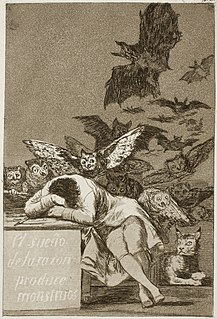 W
WA nightmare, also called a bad dream, is an unpleasant dream that can cause a strong emotional response from the mind, typically fear but also despair, anxiety or great sadness. However, psychological nomenclature differentiates between nightmares and bad dreams; specifically, people remain asleep during bad dreams, whereas nightmares can awaken individuals. The dream may contain situations of discomfort, psychological or physical terror, or panic. After a nightmare, a person will often awaken in a state of distress and may be unable to return to sleep for a short period of time.
 W
WThe nocturnal bottleneck hypothesis is a hypothesis to explain several mammalian traits. In 1942, Gordon Lynn Walls described this concept which states that placental mammals were mainly or even exclusively nocturnal through most of their evolutionary story, starting with their origin 225 million years ago, and only ending with the demise of the non-avian dinosaurs 66 million years ago. While some mammal groups have later evolved to fill diurnal niches, the approximately 160 million years spent as nocturnal animals has left a lasting legacy on basal anatomy and physiology, and most mammals are still nocturnal.
 W
WNocturnality is an animal behavior characterized by being active during the night and sleeping during the day. The common adjective is "nocturnal", versus diurnal meaning the opposite.
 W
WNow I lay me down to sleep is a classic children's bedtime prayer from the 18th century.
 W
WA Polish bed, alternatively known in English as a polonaise, is a type of canopy bed draped with a baldachin, which originated in 18th-century Poland. The curtain is topped with an elaborate crownlike centrepiece that is connected to the four corner posts of the bed frame that are usually curved. Historically, a Polish bed was placed on its side against the wall to serve as a daybed. Nowadays, any type of curtained daybed or couch is known under this term.
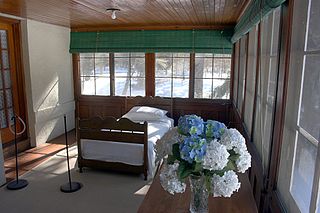 W
WA sleeping porch is a deck or balcony, sometimes screened or otherwise enclosed with screened windows, and furnished for sleeping in warmer months. They can be on ground level or on a higher storey and to any side of a home. The idea dates to around 1900 and became common in much of the United States. It is that residents sleep on a screened-in porch avoiding warm convection currents from air and wall materials beneath or beside. Before affordable electric fans and/or air conditioning were installed, families often created such rooms, well-aired, where children would sleep during summer.
 W
WA power nap is a short sleep that terminates before deep sleep ; it is intended to quickly revitalize the subject. Cornell University social psychologist James Maas coined the term.
 W
WSleep is a naturally recurring state of mind and body, characterized by altered consciousness, relatively inhibited sensory activity, reduced muscle activity and inhibition of nearly all voluntary muscles during rapid eye movement (REM) sleep, and reduced interactions with surroundings. The correlation between psychological stress and sleep is complex and not fully understood. Sleep change depends on the type of stressor, sleep perception, related psychiatric conditions, environmental factors and physiological limits.
 W
WRedshift is an application that adjusts the computer display's color temperature based upon the time of day. The program is free software, and is intended to reduce eye strain as well as insomnia.
 W
WA siesta is a short nap taken in the early afternoon, often after the midday meal. Such a period of sleep is a common tradition in some countries, particularly those where the weather is warm.
 W
WSleep is an album by composer Max Richter. Released on September 4, 2015 on Deutsche Grammophon, as a digital download, and on December 11, 2015 as an 8-CD/1-Blu-ray set., the album serves as a concept album based around the neuroscience of sleep, hence its length of over eight hours.
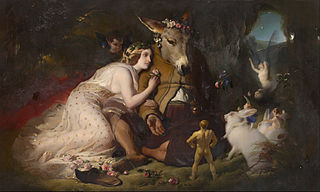 W
WThe majority of studies on sleep creativity have shown that sleep can facilitate insightful behavior and flexible reasoning, and there are several hypotheses about the creative function of dreams. On the other hand, a few recent studies have supported a theory of creative insomnia, in which creativity is significantly correlated with sleep disturbance.
 W
WThe relationship between sleep and memory has been studied since at least the early 19th century. Memory, the cognitive process of storing and retrieving past experiences, learning and recognition, is a product of brain plasticity, the structural changes within synapses that create associations between stimuli. Stimuli are encoded within milliseconds; however, the long-term maintenance of memories can take additional minutes, days, or even years to fully consolidate and become a stable memory that is accessible. Therefore, the formation of a specific memory occurs rapidly, but the evolution of a memory is often an ongoing process.
 W
WA sleep diary is a record of an individual's sleeping and waking times with related information, usually over a period of several weeks. It is self-reported or can be recorded by a care-giver.
 W
WWhether fish sleep is a provoking question, to the point of having inspired the title of several popular science books. In birds and mammals, sleep is defined by eye closure and the presence of typical patterns of electrical activity in the brain, including the neocortex, but fish lack eyelids and a neocortex. Some species that always live in shoals or that swim continuously are suspected never to sleep. There is also doubt about certain blind species that live in caves.
 W
WSleep in non-human animals refers to a behavioral and physiological state characterized by altered consciousness, reduced responsiveness to external stimuli, and homeostatic regulation. Sleep is observed in mammals, birds, reptiles, amphibians, and some fish, and, in some form, in insects and even in simpler animals such as nematodes. The internal circadian clock promotes sleep at night for diurnal organisms and in the day for nocturnal organisms. Sleep patterns vary widely among species. It appears to be a requirement for all mammals and most other animals.
 W
WA sleep study is a test that records the activity of the body during sleep. There are five main types of sleep studies that use different methods to test for different sleep characteristics and disorders. These include simple sleep studies, polysomnography, multiple sleep latency tests (MSLTs), maintenance of wakefulness tests (MWTs), and home sleep tests (HSTs). In medicine, sleep studies have been useful in identifying and ruling out various sleep disorders. Sleep studies have also been valuable to psychology, in which they have provided insight into brain activity and the other physiological factors of both sleep disorders and normal sleep. This has allowed further research to be done on the relationship between sleep and behavioral and psychological factors.
 W
WSleepio is a digital sleep-improvement program featuring cognitive behavioural therapy (CBT) techniques developed by sleep scientist Colin Espie and ex-insomnia sufferer Peter Hames.
 W
WA sleepover is a social occasion whereby a friend stays overnight at another friend's house. A pajama party or slumber party refers to the same thing, but may involve multiple people. A lock-in again involves multiple people, but it differs in that it is held in a setting other than a private home, such as a school or church. In all of the aforementioned, it is implicit that the participants are young people, perhaps children or teenagers. The goal of these events is simply to have fun with others. Unlike a traditional play date, however, sleepovers up the ante by having the participants sleep together. This may introduce some social dynamics not normally present in a typical get-together.
 W
WWaking up early is a productivity method - rising early and consistently so as to be able to accomplish more during the day. This method has been recommended since antiquity and is now recommended by a number of personal development gurus. The philosopher Aristotle said, "It is well to be up before daybreak, for such habits contribute to health, wealth, and wisdom."
 W
WA white noise machine is a device that produces a noise that calms the listener, which in many cases sounds like a rushing waterfall or wind blowing through trees, and other serene or nature-like sounds. Often such devices do not produce actual white noise, which has a harsh sound, but pink noise, whose power rolls off at higher frequencies, or other colors of noise.
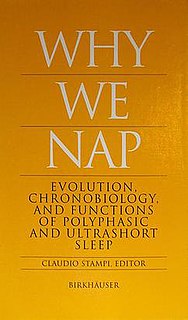 W
WWhy We Nap: Evolution, Chronobiology, and Functions of Polyphasic and Ultrashort Sleep (1992) is a book edited by Claudio Stampi, sole proprietor of the Chronobiology Research Institute. It is frequently mentioned by "polyphasic sleepers", as it is one of the few published books about the subject of systematic short napping in extreme situations where consolidated sleep is not possible.
 W
WWhy We Sleep: The New Science of Sleep and Dreams is a popular science book about sleep by the neuroscientist and sleep researcher, Matthew Walker. Walker is a professor of neuroscience and psychology and the director of the Center for Human Sleep Science at the University of California, Berkeley.
 W
WA yawn is a reflex consisting of the simultaneous inhalation of air and the stretching of the eardrums, followed by an exhalation of breath.
 W
WZeo, Inc., formerly Axon Labs, was a private company founded by Brown University students. Established December 29, 2003 in Providence, Rhode Island and later headquartered in Boston, Massachusetts, it developed a smart alarm clock with sleep monitor. Sleep states could be used to sound a wake-up alarm only when the sleeper was in the light stages of sleep, likely to awake more refreshed. Details of sleep could be uploaded to the MyZeo Web site, where they were stored, with detailed historical charts of sleep patterns downloadable, and email suggestion on improving sleep could be sent. The state of sleep was detected by a headband, essentially comprising three long-lasting electrodes made of electrically conductive fabric and a wireless unit, that transmitted data to a Zeo bedside clock unit or Apple iPhone which displayed data and sounded the wake alarm. The company also developed and marketed a personal sleep coaching Web service which allowed users of the clock to upload their sleep data, then measure and analyze their sleep patterns; this was later made available without charge.